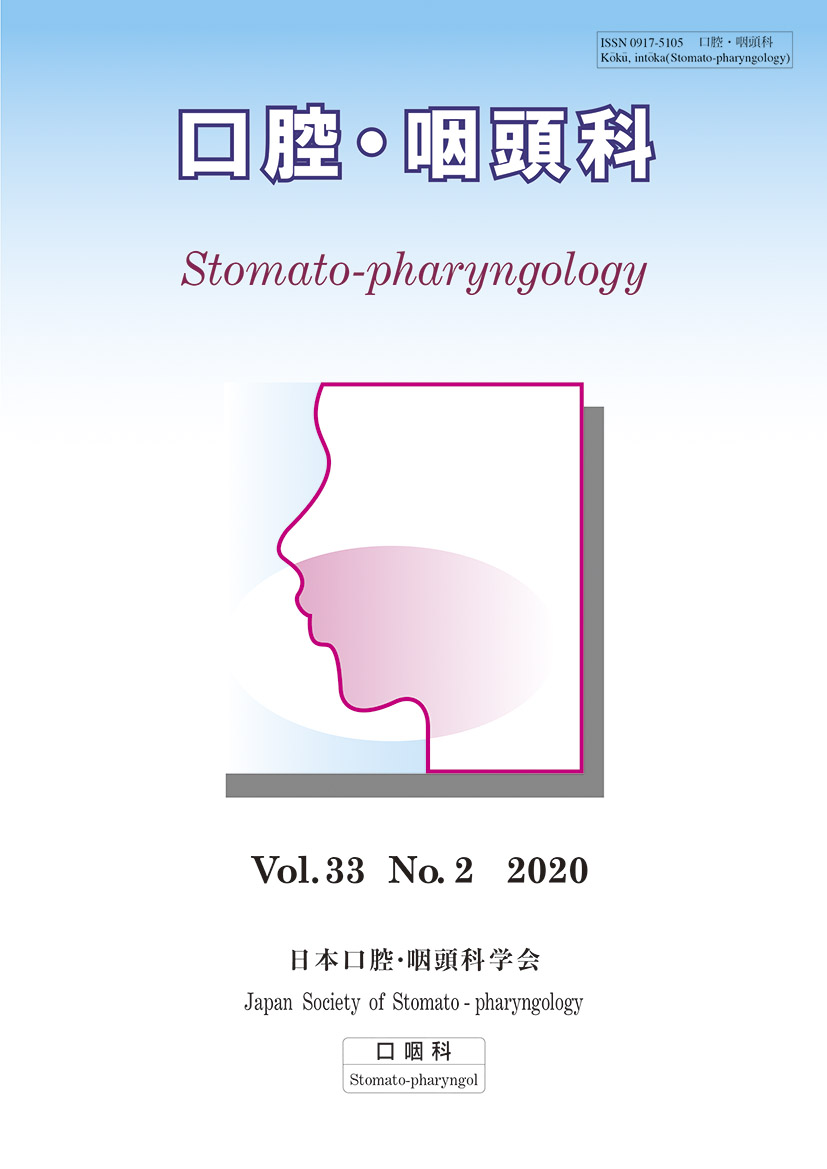Volume 33, Issue 2
Displaying 1-13 of 13 articles from this issue
- |<
- <
- 1
- >
- >|
Panel Discussion 1 The technique and clinical applications of Epipharyngeal Abrasive Therapy: EAT Review
-
2020 Volume 33 Issue 2 Pages 59-63
Published: 2020
Released on J-STAGE: June 10, 2021
Download PDF (269K)
Original Articles
-
2020 Volume 33 Issue 2 Pages 65-70
Published: 2020
Released on J-STAGE: June 10, 2021
Download PDF (970K) -
2020 Volume 33 Issue 2 Pages 71-76
Published: 2020
Released on J-STAGE: June 10, 2021
Download PDF (559K) -
2020 Volume 33 Issue 2 Pages 77-82
Published: 2020
Released on J-STAGE: June 10, 2021
Download PDF (415K) -
2020 Volume 33 Issue 2 Pages 83-87
Published: 2020
Released on J-STAGE: June 10, 2021
Download PDF (212K) -
2020 Volume 33 Issue 2 Pages 89-96
Published: 2020
Released on J-STAGE: June 10, 2021
Download PDF (435K) -
2020 Volume 33 Issue 2 Pages 97-103
Published: 2020
Released on J-STAGE: June 10, 2021
Download PDF (512K)
Case Reports
-
2020 Volume 33 Issue 2 Pages 105-109
Published: 2020
Released on J-STAGE: June 10, 2021
Download PDF (693K) -
2020 Volume 33 Issue 2 Pages 111-117
Published: 2020
Released on J-STAGE: June 10, 2021
Download PDF (545K) -
2020 Volume 33 Issue 2 Pages 119-122
Published: 2020
Released on J-STAGE: June 10, 2021
Download PDF (518K) -
2020 Volume 33 Issue 2 Pages 123-126
Published: 2020
Released on J-STAGE: June 10, 2021
Download PDF (387K) -
2020 Volume 33 Issue 2 Pages 127-130
Published: 2020
Released on J-STAGE: June 10, 2021
Download PDF (518K) -
2020 Volume 33 Issue 2 Pages 131-135
Published: 2020
Released on J-STAGE: June 10, 2021
Download PDF (425K)
- |<
- <
- 1
- >
- >|
